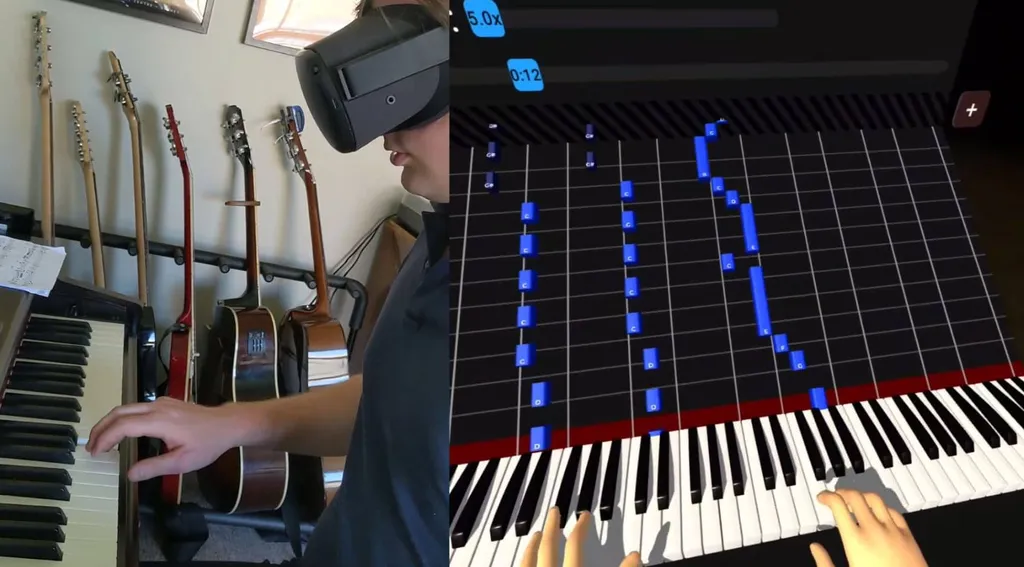You might remember a few months ago, Virtual Piano released on SideQuest, using the Oculus Quest’s hand tracking. While it was interesting, it was also very buggy and wouldn’t line up with a physical piano at all. However, a different app with a similar presence, VRtuos, is now available on SideQuest, which allows you to sync up a virtual piano with a real piano and learn piano pieces inside VR.
VRtuos also uses hand tracking, but unlike Virtual Piano, no sound is made when you press a key in VR. The whole point of VRtuos is to sync up and calibrate your in-VR piano to match up with a physical piano. In theory, this allows you to play on a real piano while the VR app teaches you a piece in a synthesia-style display that sees notes fall down onto the keys. The hand tracking gives you a vague, but definitely not perfect, indication of where your fingers are on the keys as you play.
Upon starting up VRtuos, you’ll be prompted to calibrate your physical piano with the app, which also allows for a range of different keyboard sizes. Once calibrated, the keys on the physical piano should (mostly) match up with the virtual keys. You can then select a song for the app to run through, with a variable speed so you can start slow and work your way up. You can load any MIDI file onto the app.
As a test, I tried to learn the Tetris theme song using VRtuos. Despite playing piano for many years, I had never learnt the Tetris theme, so I was going in blind — or going in with a VR headset on, I should say. After about 30 minutes, slowly bumping up the speed, I was able to play the piece easily.
Despite some major shortcomings, I was shocked at how well the tool worked and how easy it was to learn a simple piece with it. It should be noted that while I could successfully learn Tetris, anything more complex or with more big jumps between keys would be almost impossible. The app is really good, but not great. That being said, it’s mostly let down by elements that are out of its control — if the reliability and speed of the Quest’s controller-free hand tracking was improved with less lag and delay (even though it’s already very slight), I can imagine the app becoming increasingly useful due to improved accuracy. Likewise, the calibration works mostly well, but the keys still don’t always line up perfectly. This means that learning big jumps between keys and complex runs with VRtuos is unrealistic for now.
Some other musical features could definitely be added as well, such as an optional metronome that keeps you at the right tempo — with no feedback in the app itself, it can be hard to not speed up or slow down. Likewise, it would be great to be able to set notes to display as either sharps or flats — the default at the moment is sharps, which means pieces in certain keys like Ab or Gm will look a bit funny, displaying sharps for notes that should be flats. The keys themselves could also light up as they are meant to be pressed and released, which the developer has stated is being worked on. Likewise, the developer is also working on allowing the app to be used entirely virtually, with sound, therefore not requiring a physical piano.
However, despite its shortcomings, VRtuos is incredibly cool and inspiring. Much like a lot of the hand tracking apps we’ve seen so far, even when it’s not perfect, it’s still a glimpse into a future where the technology improves and tools like this become incredibly useful and reliable. It’s exciting and feels somewhat ahead of its time.
Having played piano for almost two decades, I won’t be switching over to VRtuos as my main method of learning pieces just yet. However, if improvements were made, I can definitely see it becoming useful in the future, especially for those who are just beginning to play.
VRtuos is available on the Oculus Quest via sideloading through SideQuest. To read about sideloading and SideQuest, check out our guide here.






























